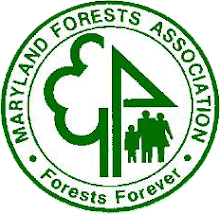The proposed action is briefly described below:
1. Wood Boilers
Amend Regulations .01, .04, .06 and adopt new Regulation .11 under COMAR 26.11.09 Control of Fuel-Burning Equipment, Stationary Internal Combustion Engines, and Certain Fuel-Burning Installations to establish particulate matter emission limits and standards for small wood boilers. (See Technical Support Document.)
Summary of Regulation
The proposed regulation:
- Establishes emission performance standards for small wood boilers available for sale in Maryland after April 1, 2009 that will be implemented in two phases. The first phase prohibits the sale, distribution, and installation of small wood boilers that do not meet an emission limit of 0.60 pounds of particulate matter per million Btu of heat input as of April 1, 2009 through March 31, 2010. The second phase prohibits the sale, distribution, and installation of small wood boilers that do not meet an emission limit of 0.32 pounds of particulate matter per million Btu of heat output as of April 1, 2010;
- Establishes operational requirements for the owners or operators of new and existing small wood boilers. This includes using clean wood, wood pellets made from clean wood, and heating oil as fuel and prohibiting the burning of garbage, tires, asphalt products, manure, and animal carcasses as fuel;
- Requires manufacturers certify that each model meets the applicable particulate matter emission standard using one of the following test methods:
- U.S. EPA Test Method 28 OWHH for Measurement of Particulate Emissions and Heating Efficiency of Outdoor Wood-Fired Hydronic Heating Appliances;
- 40 CFR Part 60, Appendix A Test Methods 1-5 and 40 CFR Part 51, Appendix M, Test Method 202;
- ASTM E2618 – 08 Standard Test Method for Measurement of Particulate Emissions and Heating Efficiency of Outdoor Solid Fuel-Fired Hydronic Heating Appliances; and,
- Any alternative test method approved by the Department.
- Requires manufacturers to meet specific labeling standards for each model the wish to sell in Maryland; and,
- Clarifies that local and county governments the authority to enforce certain provisions of this regulation and address citizen nuisance complaints that arise from the operation of small wood boilers. Local and county governments also have the authority to implement additional rules or restrictions in response to the proposed regulation.
Public hearings on the proposed actions will be held on March 18, 2009 at 10 a.m. at the Department of the Environment, 1800 Washington Boulevard, 1st Floor Aqua Conference Rooms, Baltimore, Maryland 21230-1720.
Interested persons are invited to attend and express their views. Comments may be mailed to Deborah Rabin, Regulations Coordinator, Air and Radiation Management Administration, Department of the Environment, 1800 Washington Boulevard, Suite 730, Baltimore, Maryland 21230-1720, or emailed to drabin@mde.state.md.us, or faxed to (410) 537-4223.
Comments must be received not later than March 18, 2009 , or be submitted at the hearing. For more information, call Deborah Rabin at (410) 537-3240.



